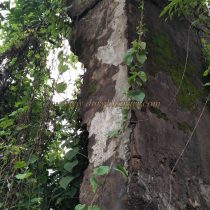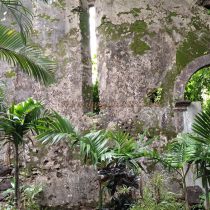KELVE CUSTOM KOT - 2
TYPE : COASTAL FORT
DISTRICT : PALGHAR
HEIGHT : 0
GRADE : EASY
Kelve beach on the Western Railway is famous among Mumbaikars. Get off at Kelve station and reach Kelve village by 6 seater rickshaw. Kelve Custom Kot-2 is on the right-hand side of Kelve Customs Office on Dandakhadi Road leading to Bazar from Kelve Shitladevi Temple to Koliwada. Next to the fort is a newly built church where you can see a 300-year-old wooden statue of Mother Mary. To the left of the church are the remains of a large Portuguese-era warehouse. This fort is a square-shaped bastion built to guard the warehouse. Since the name of Kelve Custom Kot is not seen in history, this fort is known as Custom Kot-2 as it is named after the adjacent custom office and the number 2 is deprived as there is another fort adjacent to it.
...
Once upon a time, this bastion was on the edge of the creek but due to geographical changes, this fort has come to land. Apart from the warehouse, there is no construction around this bastion-shaped structure, which means that it must have been used to monitor the creek traffic and to protect the warehouse. As there is no way to climb the bastion, you have to use a ladder. Due to the huge number of trees growing on the bastion, the remains are not visible or recognizable. Stones and mud have been used for the construction of this bastion. Kelve Custom Kot-2 bastion is also located at the mouth of Dandakhadi. The present height of this bastion is 15 feet, although its original height should be 20 to 25 feet. It is clear from the barrage of the cannon on the bastion that the main purpose of this structure was to protect and patrol the warehouse. The watchtowers, usually built by the Portuguese in the 16th century, were mainly used to provide the necessary protection and logistics to the small and large forts from Datiware to Manor. Using small forts, watchtowers, and long-range cannons, the Portuguese established their empire on the sea lanes of the North Konkan. After the conquest of Mahim fort in the Vasai campaign of 1739, on 10th January 1739, the Kelve fort and its area came under the control of the Marathas. The fort is small and can be seen within 10 minutes. People coming here with an expectation to visit a fort are likely to be upset, but those who want to see the Portuguese outpost on the ancient maritime trade route and its geographical importance should visit this place.
© Suresh Nimbalkar





